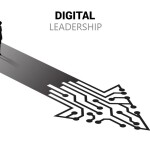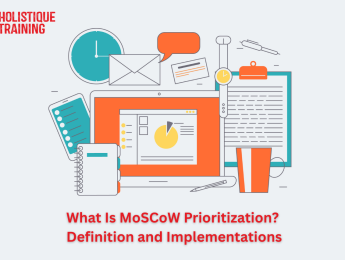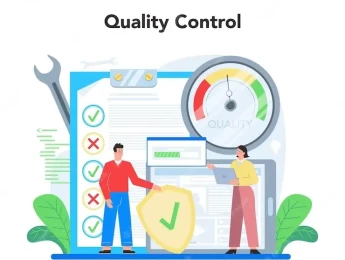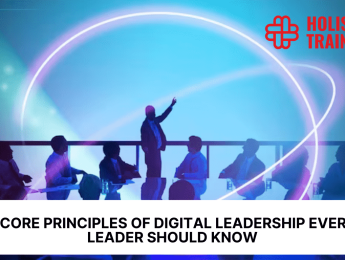- Table of Contents
- Introduction
- 1. The Changing Role of Leaders in the Digital Age
- 2. Key Challenges Leaders Face Today
- Speed of Change
- Big Data Overload
- Managing Virtual Teams
- Cybersecurity Risks
- 3. Why Traditional Leadership Skills Are No Longer Enough
- 4. Benefits of Leadership Training in the Digital Era
- Better Decision-Making
- Enhanced Innovation
- Building Resilient Cultures
- 5. Essential Skills for Digital-Age Leaders
- Analytical Thinking
- Digital Emotional Intelligence
- Remote Team Management
- 6. Digital Tools That Power Leadership Training
- 7. Designing a Leadership Programme That Works
- 8. Embracing Change and Preparing for the Future
- Conclusion
Introduction
Leadership in the 21st century has undergone a seismic shift, fundamentally redefining what it means to lead effectively. Gone are the days when authority, hierarchy, and years of experience alone were sufficient hallmarks of a good leader. While these qualities still hold some value, they are no longer enough in an increasingly complex and fast-paced world.
Today’s leaders are expected to do far more than just manage operations or enforce compliance. They must navigate a landscape characterised by rapid technological advancements, intense global competition, and ever-evolving workforce expectations. This includes fostering inclusive and equitable workplace cultures, leveraging digital tools to enhance productivity, and inspiring geographically dispersed and highly diverse teams.
The digital era has not only disrupted traditional business models but has also transformed the very essence of leadership itself. Leaders are now required to become catalysts for change, visionaries for innovation, and guardians of organisational resilience. Those who fail to adapt risk becoming obsolete, as their organisations struggle to keep pace with the demands of modern markets and stakeholders.
In this article, we will discuss why leaders need leadership training in this digital era, exploring how leadership roles have evolved, what challenges lie ahead, and how training can equip leaders to succeed.
1. The Changing Role of Leaders in the Digital Age
The role of leaders in the digital age has become significantly more complex and dynamic than in previous generations. Whereas leadership was once predominantly about providing direction, managing resources, and ensuring compliance, it now encompasses a far broader and more nuanced set of responsibilities.
In today’s environment, leaders must strike a delicate balance between traditional managerial duties and new, technology-driven demands. They are expected to guide their organisations through ongoing digital transformation initiatives, integrating cutting-edge technologies such as artificial intelligence, machine learning, and big data analytics into business strategies. Furthermore, leaders must cultivate organisational cultures that are both resilient and adaptive — capable of responding effectively to disruption, whether caused by market fluctuations, emerging technologies, or global crises.
Leaders are also tasked with fostering innovation and empowering employees to contribute creatively, often within decentralised or hybrid teams. This requires them to move away from rigid hierarchical approaches in favour of more collaborative, empathetic, and flexible leadership styles.
According to a study by McKinsey & Company, organisations led by digitally capable leaders are 2.5 times more likely to outperform their peers in terms of growth and profitability. This finding underscores the importance of developing leaders who possess not only strong technical acumen but also the emotional intelligence and strategic foresight necessary to thrive in a digital world.
By embracing these evolving responsibilities, leaders can ensure that their organisations remain competitive, innovative, and resilient — qualities that are indispensable in the digital age.
2. Key Challenges Leaders Face Today
The modern workplace presents leaders with a series of profound challenges — many of which were either marginal or entirely absent just a decade or two ago. These challenges are largely driven by the forces of digital transformation, globalisation, and evolving workforce expectations, and they demand from leaders not only new skills but also a fundamentally different mindset. Below, we explore these challenges in depth:
Speed of Change
Perhaps the most striking characteristic of the digital age is its relentless pace. Technological innovations, such as artificial intelligence, blockchain, and automation, are emerging and evolving faster than ever before. Alongside this, consumer preferences are shifting rapidly, and markets are being disrupted by agile start-ups or global crises. Leaders must be able to make timely, informed decisions, adapt to shifting circumstances, and implement changes at unprecedented speed. Without adequate training, they risk either falling behind the competition or making hasty decisions that harm their organisations.
Big Data Overload
Today’s leaders operate in a world saturated with data. From customer behaviour analytics and financial metrics to employee performance indicators and market trends, the sheer amount of information can be overwhelming. Untrained leaders may struggle to separate the signal from the noise, leading to either paralysis by analysis or poor decision-making. To succeed, leaders must develop the ability to critically analyse complex data sets, extract actionable insights, and integrate them into coherent strategies — a task that requires both technical and strategic expertise.
Managing Virtual Teams
The rise of remote and hybrid work arrangements has fundamentally altered how teams interact. Leading a team that is geographically dispersed presents unique challenges: communication can become fragmented, employees may feel disengaged or isolated, and monitoring productivity becomes more complex. Leaders must master the art of fostering collaboration across digital platforms, maintaining visibility into team performance, and ensuring that all team members feel valued and connected — no matter where they are located.
Cybersecurity Risks
As organisations grow increasingly dependent on digital tools and platforms, they also become more vulnerable to cyber threats. From phishing scams to ransomware attacks, the potential for damage is significant — both financially and reputationally. Leaders are not expected to become cybersecurity experts, but they do need to cultivate a strong awareness of digital risks, prioritise cybersecurity initiatives, and embed a culture of vigilance and compliance throughout their teams. Ignoring these risks can result in catastrophic breaches and loss of trust among stakeholders.
Together, these challenges illustrate that leadership today is no longer a matter of simply maintaining the status quo; it requires active engagement, continuous learning, and the ability to anticipate and respond to an ever-changing environment.
3. Why Traditional Leadership Skills Are No Longer Enough
For much of the 20th century, leadership was rooted in authority, longevity, and operational control. Seniority and experience were often seen as the primary qualifications for leading an organisation. Leaders exercised command over their teams, made decisions based largely on intuition and experience, and expected compliance from their subordinates.
However, in today’s volatile, uncertain, complex, and ambiguous (VUCA) environment, these traditional attributes are no longer sufficient to ensure success. The digital age demands leaders who are not only technically literate and adaptable but also capable of fostering innovation, inclusivity, and collaboration. Traditional skills such as rigid decision-making or authoritative communication can actually impede progress in a fast-moving, digitally enabled workplace.
Below is a comparison that highlights the shift from traditional to modern, digital-age leadership skills:
Traditional Skills | Modern Digital-Age Skills |
Command and control | Empowerment and collaboration |
Experience-based decision-making | Data-driven decision-making |
Linear, hierarchical thinking | Systems and design thinking |
Reactive problem-solving | Proactive innovation |
Authoritative communication | Transparent and inclusive dialogue |
Whereas traditional leaders relied on command and control structures, today’s effective leaders empower their teams to take ownership of outcomes and contribute creatively. Instead of basing decisions solely on past experiences, modern leaders harness data analytics and predictive tools to guide their strategies. Hierarchical, siloed ways of thinking have given way to cross-functional, systems-oriented approaches, while reactive problem-solving has been replaced by a proactive, innovation-driven mindset.
Finally, communication has transformed from one-way, top-down directives to transparent and inclusive dialogues that invite participation, feedback, and shared understanding.
This evolution underscores why leadership training is no longer optional but essential — equipping leaders with the mindset, skills, and behaviours required to thrive in the digital era.
4. Benefits of Leadership Training in the Digital Era
Leadership training equips today’s leaders with the knowledge, tools, and confidence to excel in a digital-first business landscape. Beyond simply teaching techniques, it fosters a mindset that embraces change, nurtures innovation, and prioritises organisational resilience. Below we delve deeper into some of the key benefits:
Better Decision-Making
The digital workplace generates vast amounts of complex and often ambiguous information. Leaders who undergo structured training programmes develop the analytical frameworks and critical thinking skills necessary to interpret this data meaningfully. They learn to sift through the noise, assess risks and opportunities systematically, and make timely, evidence-based decisions. This reduces the likelihood of costly mistakes and improves organisational agility in responding to emerging challenges.
Enhanced Innovation
Leadership training often exposes participants to modern creative thinking techniques, such as design thinking, agile methodologies, and cross-functional collaboration. Trained leaders are better equipped to identify opportunities for innovation and to empower their teams to experiment without fear of failure. They are more likely to foster a culture where novel ideas are encouraged and evaluated constructively — helping to position their organisations as industry leaders rather than followers.
Building Resilient Cultures
One of the most valuable outcomes of leadership training is its ability to instil resilience at both an individual and organisational level. Leaders learn strategies to maintain composure under pressure, support their teams through change, and build inclusive environments where everyone feels valued. This resilience enables organisations to weather uncertainty — whether stemming from market disruption, technological advances, or global crises — with confidence and unity.
A study by Harvard Business Review found that organisations investing in leadership development were 29% more likely to foster a strong culture of innovation and significantly more resilient in the face of disruption. This reinforces the transformative potential of leadership training in shaping future-ready organisations.
5. Essential Skills for Digital-Age Leaders
Thriving as a leader in the digital age requires mastering a distinct set of skills that go beyond the traditional repertoire. Below we explore some of the most critical competencies that leaders must develop to remain effective in today’s environment:
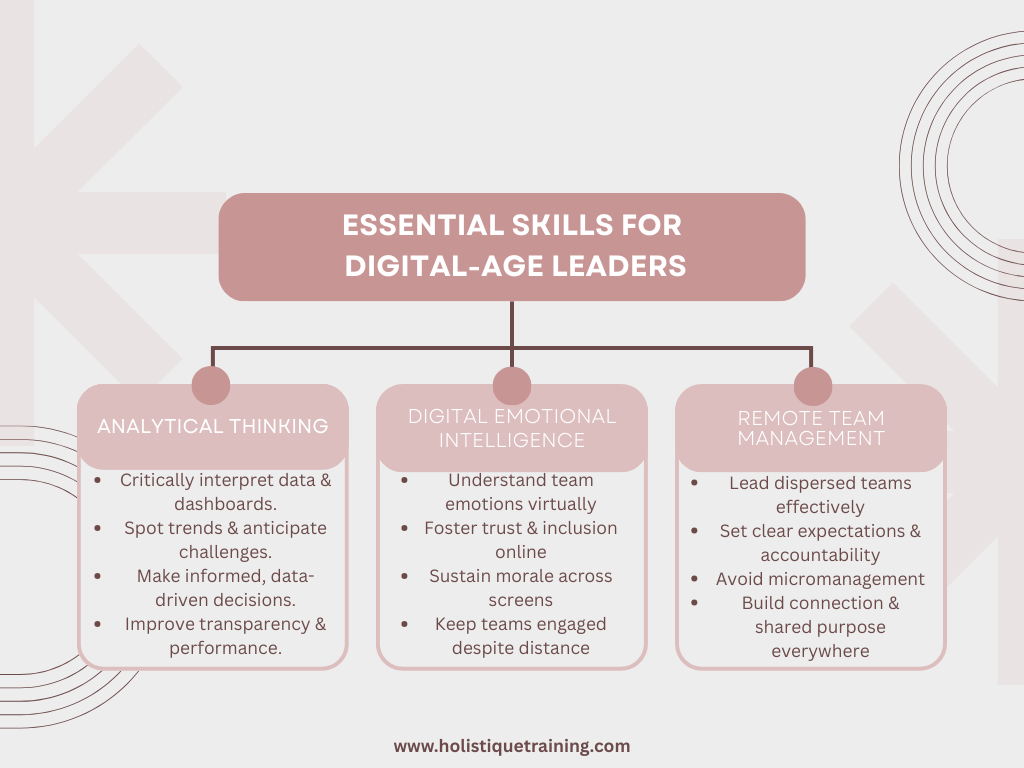
Analytical Thinking
In an era dominated by big data and real-time analytics, leaders must be able to interrogate data critically, extract actionable insights, and make informed decisions. This means not only understanding how to interpret dashboards and KPIs but also being able to spot trends, anticipate challenges, and align data-driven insights with broader strategic goals. Analytical thinking helps leaders avoid bias, improve transparency, and optimise organisational performance.
Digital Emotional Intelligence
The widespread adoption of digital tools and remote work has made emotional intelligence more crucial — and more challenging — than ever before. Digital EQ refers to the ability to perceive, understand, and respond to the emotional states of team members through virtual interactions. Leaders with strong digital EQ can build trust, foster inclusion, and sustain morale even when communication is limited to screens. This skill is essential for maintaining engagement and ensuring that team members feel supported despite physical separation.
Remote Team Management
With hybrid and fully remote working models becoming commonplace, leaders must excel at managing geographically dispersed teams. This involves implementing effective communication channels, setting clear expectations, and maintaining accountability without resorting to micromanagement. Additionally, leaders need to ensure that all employees — regardless of their location — feel equally included and connected to the organisation’s mission and culture.
These competencies — when honed through targeted leadership training — enable leaders to bridge the gap between traditional practices and modern demands, ensuring they and their organisations thrive in an increasingly digital and interconnected world.
6. Digital Tools That Power Leadership Training
Technology has fundamentally transformed how leadership development is delivered. Rather than relying solely on in-person workshops or static manuals, organisations today can leverage a range of digital tools that make training more accessible, immersive, and tailored to individual needs.
These tools not only reduce logistical barriers, such as travel and scheduling, but also increase engagement by incorporating interactivity and personalisation. Moreover, digital tools enable continuous learning — allowing leaders to learn at their own pace, revisit materials, and stay updated as new content becomes available.
Some powerful examples include:
- Learning Management Systems (LMS): Platforms such as Moodle or TalentLMS serve as centralised hubs where learners can access materials anytime, anywhere. They support videos, interactive quizzes, discussion forums, and tracking of progress.
- Virtual Reality (VR): Immersive technologies offer experiential learning opportunities by simulating real-world scenarios — such as crisis management or high-stakes negotiations — in a safe environment where mistakes become learning opportunities.
- AI-Powered Analytics: Tools like Degreed or EdCast use artificial intelligence to curate personalised learning journeys based on each individual’s progress, preferences, and performance data.
Below is a quick summary of these tools:
Tool | Purpose |
LMS (e.g., Moodle) | Centralised, flexible training |
Virtual Reality (VR) | Experiential, scenario-based learning |
AI Learning Platforms | Personalised content recommendations |
By integrating these digital tools into leadership development strategies, organisations can ensure their leaders are engaged, well-supported, and prepared to meet the demands of the modern workplace.
7. Designing a Leadership Programme That Works
For leadership training to deliver real impact, it must be intentionally designed to align with both organisational priorities and the specific needs of participants. A generic, one-size-fits-all approach often fails to inspire engagement or translate into tangible results.
An effective programme starts with a clear understanding of current and future skill gaps. This ensures that training content is relevant and forward-looking. Measurable objectives should then be set — such as improved decision-making speed, higher employee engagement, or stronger innovation metrics — to track progress meaningfully.
Incorporating real-world scenarios and case studies makes the learning experience practical and relatable, allowing leaders to apply concepts directly to their day-to-day challenges. Finally, blending online modules with interactive in-person sessions caters to different learning preferences and accommodates busy schedules.
At Holistique Training, we specialise in crafting leadership development programmes specifically for the digital era. Our courses are designed to build leaders who are not only technically skilled but also emotionally intelligent, agile, and visionary — ready to thrive in a fast-changing world.
8. Embracing Change and Preparing for the Future
Despite the compelling benefits of leadership training, some leaders remain sceptical, perceiving it as unnecessary, time-consuming, or even threatening to their authority. This resistance is often rooted in fear of change or a misunderstanding of what training entails.
To overcome this barrier, organisations should make the advantages of training explicit — highlighting how it can enhance not just organisational performance but also the leader’s own career prospects. Involving reluctant leaders in the design and delivery of training programmes can also help secure their buy-in, as they feel a sense of ownership over the process. Showcasing success stories from peers who have benefited from training can further alleviate scepticism and encourage participation.
Looking forward, leadership will only grow more intertwined with technological and societal trends. Tomorrow’s leaders will need to navigate areas such as artificial intelligence ethics, sustainability practices, and cross-cultural digital collaboration with confidence and competence.
By framing leadership training as preparation not just for current responsibilities but for inevitable future demands, organisations can inspire even the most hesitant leaders to embrace development opportunities wholeheartedly. A proactive investment in training today ensures that leaders remain effective, credible, and relevant in the tech-driven world of tomorrow.
Conclusion
The digital era has fundamentally transformed leadership expectations, presenting both challenges and opportunities. Leaders must evolve their skills, mindset, and practices to remain effective. Leadership training provides the tools and confidence they need to thrive—enabling better decisions, fostering innovation, and cultivating resilient teams.
To stay ahead, invest in your leadership journey today. At Holistique Training, we offer specialised programmes designed to empower leaders in the digital age. Enrol now and future-proof your career.




